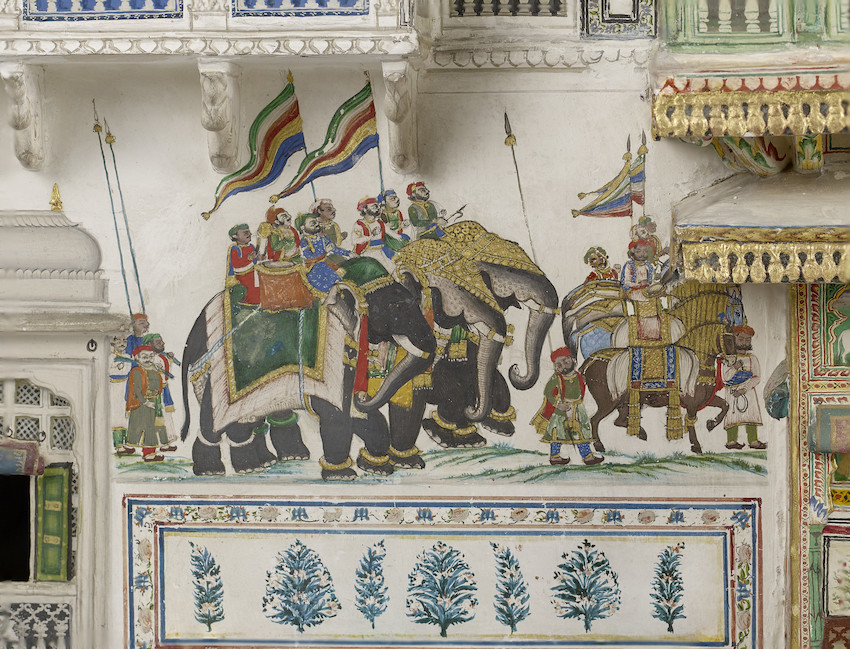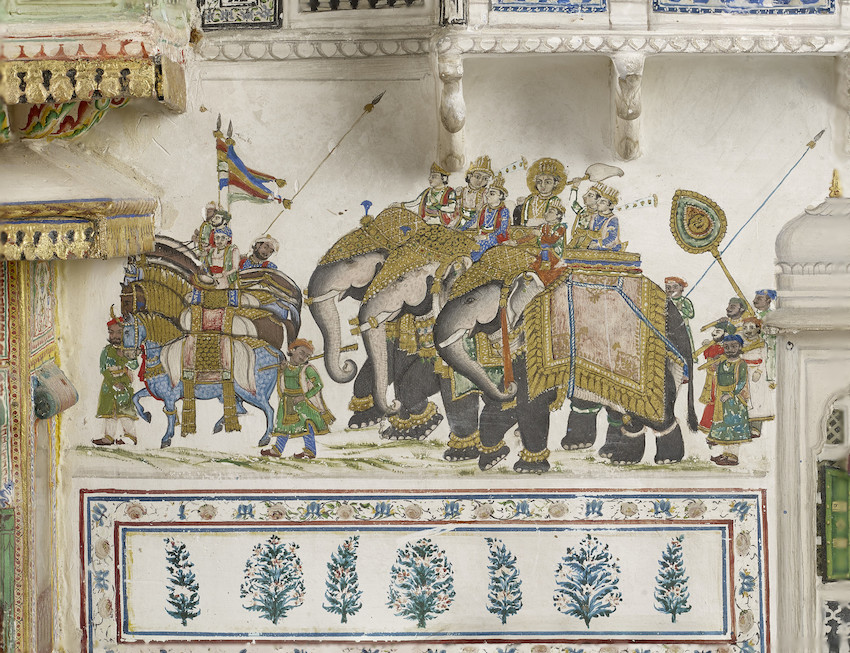As the opening of the Splendours of the Subcontinent exhibition at Cartwright Hall Art Gallery gets ever nearer, Kajal Meghani from the Royal Collection Trust has written us another blog providing additional context to the fantastic objects that you’ll be able to enjoy.
She writes:
When the Prince and his tour party entered the city of Jaipur in Rajasthan, they were struck by the incredible architecture. William Howard Russell, who recorded the tour in his diary, exclaimed, ‘If I were to say that the houses look as if they were built of solid strawberry creams streaked in white arabesque, no adequate impression would be produced, simply became one cannot imagine houses of such material. And yet, out of confectionery, I have never beheld street architecture of this kind’. J. Drew Gay, journalist for The Daily Telegraph, was equally astounded and described Jaipur as the ‘Paris of India…a city of palaces’.

Judging by this model of a palatial house presented to the Prince, these statements are quite understandable.

This model was presented to the Prince by Ram Singh II, Maharaja of Jaipur, and made by the students of the Jaipur School of Art. The model is based on a haveli or townhouse typically found in the region. These townhouses are usually of three or more stories with a central courtyard, and were commissioned by wealthy merchants. Some of the oldest havalis date from the eighteenth century.

The painted plaster model shows an astonishing amount of detail, and the students have elaborately decorated the interiors.

Havelis in Rajasthan, particularly the region of Shekhawati, are renowned for their painted frescoes. These frescoes would often juxtapose traditional subjects such as folk tales with imagery inspired by Europe.

These murals were painted by chitera (artists) using natural pigments such as indigo mixed with plaster. The front of the model presented to the Prince is painted using water based pigments to depict a parade of richly caparisoned elephants and horses. In the late nineteenth century, such architectural models were often presented as gifts to visiting dignitaries.


